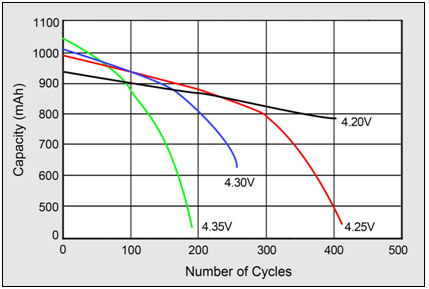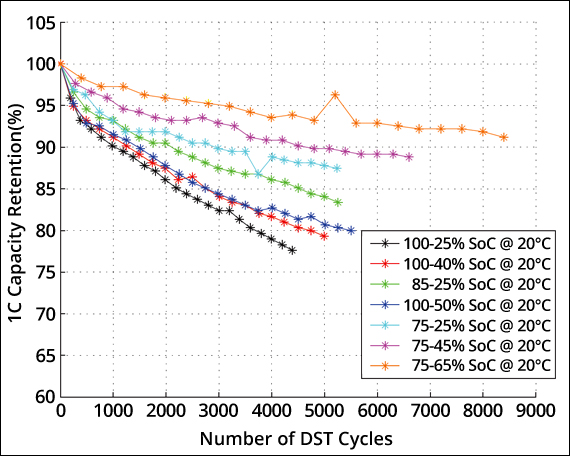Batteries
Lithium Ion Voltage vs. Charge Status
4.2V – 100%
4.1V – 87%
4.0V – 75%
3.9V – 55%
3.8V – 30%
3.5V – 0%Somewhere in the 3.9V or slightly below area would be ideal for storage. Just don't overdo it. I believe AW batteries generally ship about 40% charge, or you can just discharge them in a light or other device, since that is easy and safe.
Battery University
Below are links to and summaries of some very informative Battery University articles.
BU-808: How to Prolong Lithium-based Batteries
Summary:
-
Environmental conditions, not cycling alone, govern the longevity of lithium-ion batteries. The worst situation is keeping a fully charged battery at elevated temperatures. Battery packs do not die suddenly, but the runtime gradually shortens as the capacity fades.
-
Lower charge voltages prolong battery life and electric vehicles and satellites take advantage of this. Similar provisions could also be made for consumer devices, but these are seldom offered; planned obsolescence takes care of this.
- A laptop battery could be prolonged by lowering the charge voltage when connected to the AC grid. To make this feature user-friendly, a device should feature a “Long Life” mode that keeps the battery at 4.05V/cell and offers a SoC of about 80 percent. One hour before traveling, the user requests the “Full Capacity” mode to bring the charge to 4.20V/cell.
BU-401a: Fast and Ultra-fast Chargers
Summary
- Charging and discharging Li-ion above 1C reduces service life. Use a slower charge and discharge if possible. This rule applies to most batteries.
- All batteries perform best at room temperature and with a moderate charge and discharge. Such a sheltered lifestyle does not always reflect real-world situations where a compact pack must be charged quickly and deliver high currents. Such typical applications are drones and remote control devices for hobbyists. Expect a short cycle life when a small pack must give all it has.
-end



